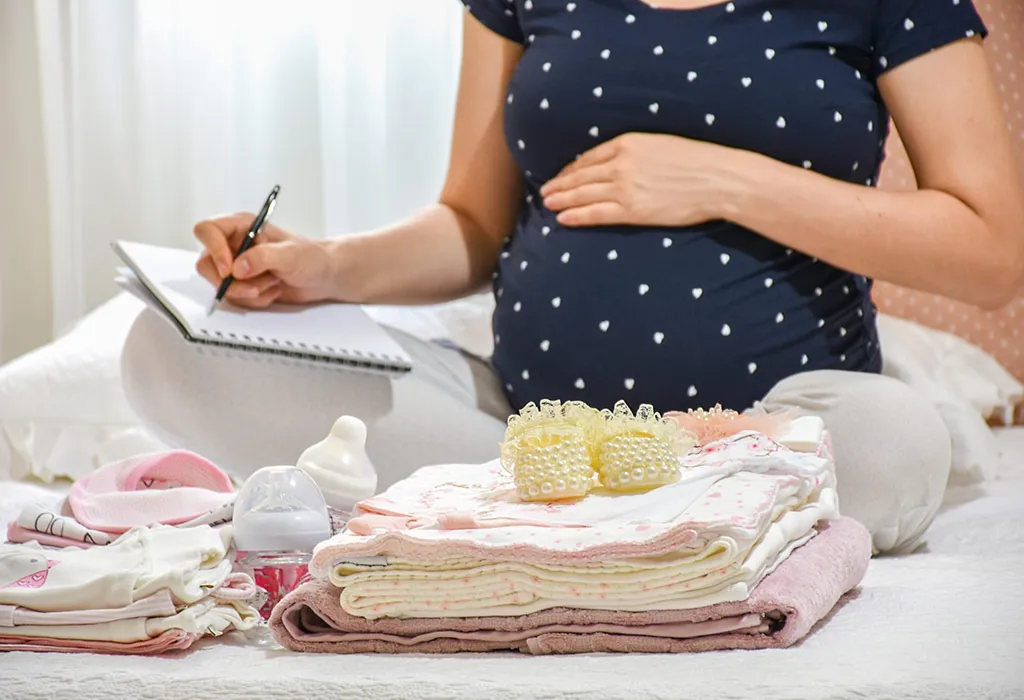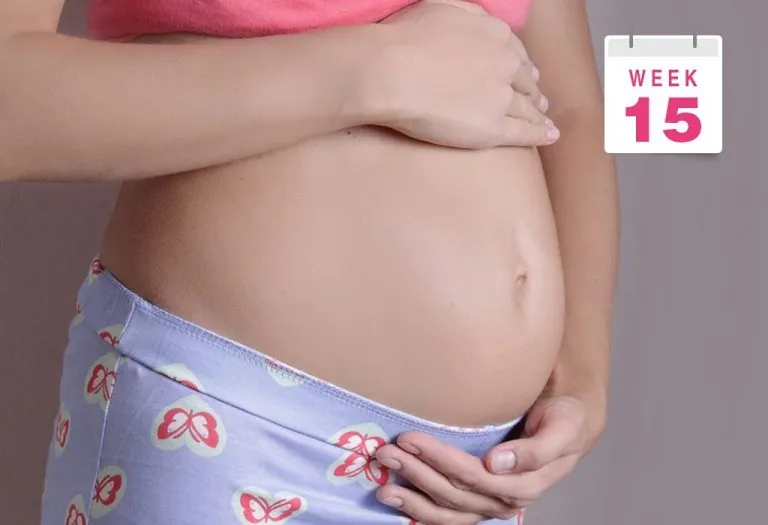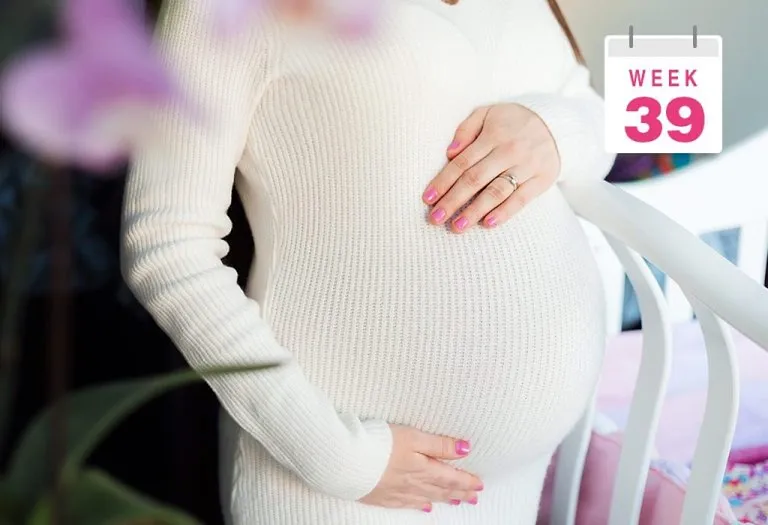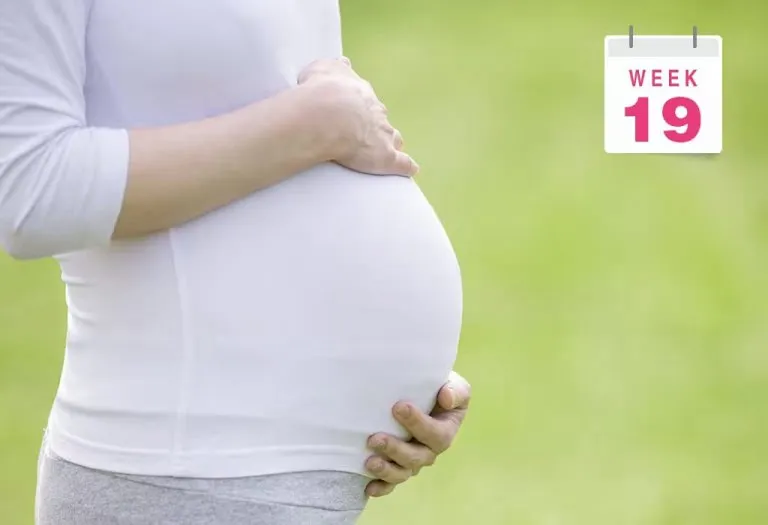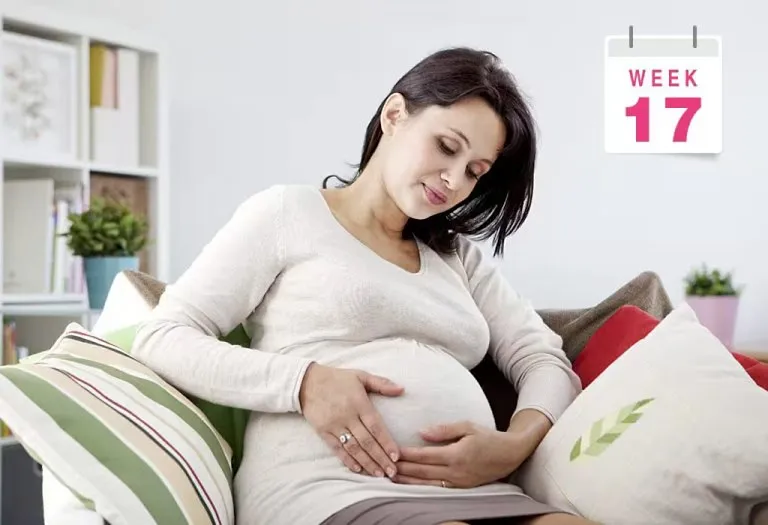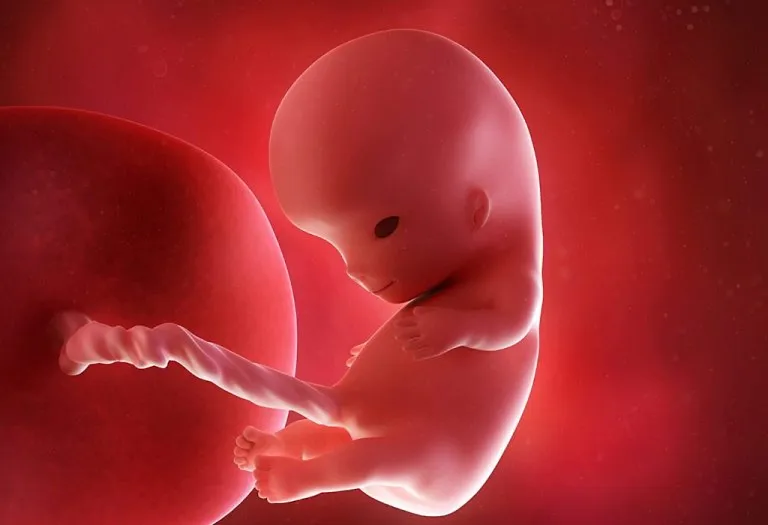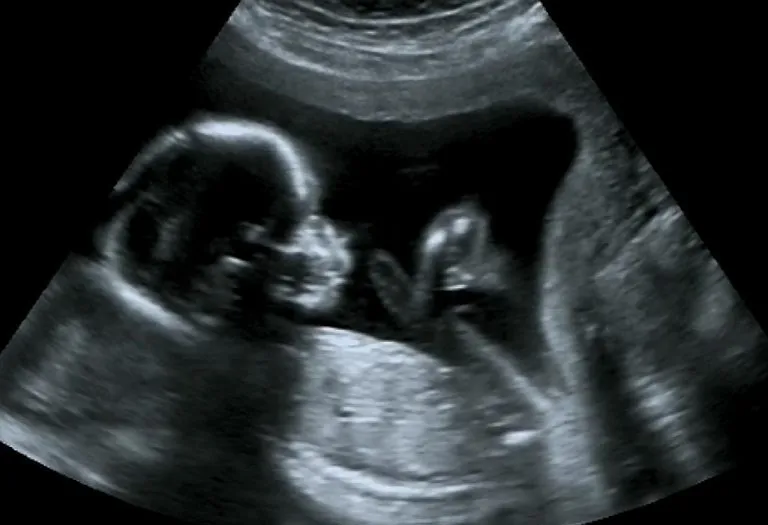32 Weeks Pregnant: Symptoms, Ultrasound, & Body Changes

At 32 weeks of pregnancy, you’re in the third trimester of pregnancy. Your delivery date is approaching, and you must be excited to meet your little one. Your fully-grown baby bump is making it harder for you to bend or walk, resulting in waddling due to the extra weight up front (1). You might experience fatigue, heartburn, and breathlessness, as these are the common symptoms in the third trimester of pregnancy, but your baby will continue to grow until your delivery date. At 32 weeks, you may also notice changes in your body and your baby’s movements. Read this article to find out what you should expect at 32 weeks of pregnancy.
Your Baby’s Growth at 32 Weeks of Pregnancy
Week 32 is going to bring with it a whole host of new experiences. First, your baby is going to be tapping and wriggling rather than his usual bouncing around. This is largely due to the lack of space in your uterus, as your little one is getting pretty big. Prepare yourself for the drop your foetus is going to take into your pelvis in preparation for birth. Your baby might be upside down (which is known as the breech position), but he might revert to a normal position before birth (1). Your baby’s growth rate will be high now, as he might put on around fifty per cent of his weight between now and delivery. By this time, the baby’s lungs are fully developed, and in case of premature delivery, there’s a high chance of the baby’s survival. Lanugo is beginning to disappear, and the head may have some hair by now. Their bone marrow has started to form red blood cells (2).
What Is the Size of the Baby?
At 32 weeks pregnant, a baby weighs between 1.5 kg and 2 kg and is about 35 cm from head to foot (3). Crowding your uterus, your baby can’t really move around much, but now it’s only a matter of time until he has all the space in the world. The baby is completely formed by now, looking almost exactly like a smaller newborn.
Common Bodily Changes
You will experience a range of body changes during pregnancy at 32 weeks. But not to worry, as these can be controlled to an extent:
- Swollen feet: Oedema is common during pregnancy, and as a result, you may notice swelling in your feet and ankles. This happens due to excess water retention in those regions. Buy comfortable free-size shoes if your feet hurt.
- Change in the colour of nipples: Your nipples are going to get considerably darker as your breasts ready themselves for your newborn. This is due to the antibacterial oils they produce to keep the area sterile.
- Leaking breasts: Your breasts may start leaking, and this is just a sign that they are preparing to be nursed once your baby is out. Colostrum is going to seep out of your nipples quite frequently, so take care to wear padded water-absorbent bras if you have to go out (4).
- Excess vaginal secretions: Your vagina is preparing for delivery by preparing a thick mucous layer around the walls to keep them lubricated. As this could be a tad inconvenient, carry around a sanitary napkin just in case you need it.
Symptoms of 32 Weeks of Pregnancy
Symptoms at thirty-two weeks of pregnancy are more like a progression and may continue till childbirth. You are more likely to experience frequent urination, varicose veins, spider veins, haemorrhoids, shortness of breath, and backaches (5). Here are some more pronounced symptoms you might experience at 32 weeks of pregnancy:
1. Braxton-Hicks Contractions
Your Braxton-Hicks contractions (false contractions) are getting stronger and more frequent to prepare you for labour. These prodromal or false labour pains are a common symptom in the third trimester and are uncomfortable but not painful. Remember, these should not be confused with real labour pains (6).
2. Feeling faint
You may faint or feel dizzy for several reasons, especially not having enough blood sugar. Keep a sugary snack ready at all times.
3. Haemorrhoids
Rectal varicose veins might occur due to constipation, and they are rather painful and sensitive. Try to soothe them with ice packs or witch hazel pads, but stubborn ones need medical intervention (7).
4. Constipation
With your rapidly growing foetus squeezing your organs to the side, your bowels are not faring any better. The pressure exerted on them might make your daily motions infrequent and more difficult.
5. Itchy skin
The bigger your baby gets, the more it stretches your belly skin. This could lead to dryness and cracks. Moisturisers are well suited to ease the discomfort.
6. Heartburn
Heartburn is one of the most common signs of 32 weeks of pregnancy. It is going to get more uncomfortable as your baby grows and pushes against your digestive system. Try to eat smaller but more frequent meals. Consume digestive aids like buttermilk and curd more often.
Belly at 32 Weeks of Pregnancy
At the 32nd week, you can expect your stomach to vary from 28-36 cm from top to bottom. Around this time, your baby will drop into the pelvic cavity in preparation for birth, making your 32-week pregnant tummy (bump) a lot lower in height than earlier. Sometimes, this drop happens during labour.
32 Weeks Pregnant Ultrasound Scan
In the 32nd week, an ultrasound scan is important as it can tell you several details, such as:
- Foetal growth: Your doctor will be able to tell you if the baby is growing normally.
- Foetal placement: Your baby needs to be with his head down towards the cervix, but sometimes can be in the reverse position.
You may also get a 3D ultrasound scan to observe the minute details of your little one’s face and body. An ultrasound scan at 32 weeks of pregnancy is a must if suggested by your doctor.
What to Eat
At the 32nd week of pregnancy, you must make sure that your diet includes foods rich in iron, as iron is important during this time. This is because of the jump in your blood amount by approximately fifty per cent. Iron is an essential part of haemoglobin, the protein required to carry oxygen. Make sure your diet at 32 weeks of pregnancy is rich in iron with foods like spinach, broccoli, red meat, and legumes. You may even ask your doctor for a multivitamin supplement if your diet does not cover the nutritional requirements for the same.
The baby’s nails, teeth, hair, and bones are formed but are still delicate. Strengthening them is important, which requires sufficient calcium per day. Foods like dairy, leafy vegetables and cereal are great sources of calcium, so make sure you include them in your diet.
Avoid foods that contain fat and refined sugar. Have frequent smaller meals and try to eat less meat and a lot more fresh vegetables and fruits, whole grains, and nuts. Alcohol is absolutely out of the question.
Care Tips
Note these 32-week pregnancy care pointers for a comfortable experience at this stage of pregnancy.
Dos
- As babies can survive outside the womb after this point, you might want to make some preparations for an early pregnancy just in case. One thing to consider is the pain relief method to choose. There are several available, but you can reject all of them if you want a natural, drug-free birth.
- Keep a set of nappies, blankets, and pillows ready for your little one.
Don’ts
- Don’t forget to pack stuff for yourself when you get that hospital bag ready. Keep a few sanitary napkins as you will definitely need to use them after the birth.
- Don’t neglect your exercises, especially swimming or yoga, as they provide relief from back pain and pelvic pain. But exercise only after checking with your doctor.
What You Need to Shop For
You can now plan how to decorate your little one’s room. Purchase maternity dresses and bras, as well as clothes to wear after you give birth. Maternity nighties would be a smart purchase as they spell comfort throughout the pregnancy. You can also check out Bella Mama’s maternity night suits, which offer nursing access at the front and ample space for the belly to expand. Stock up on feeding bottles, nappies, medicated powder and small soft toys. You can also purchase a small pram to move your baby around the house or take a walk outside.
FAQs
1. How do I relieve the pressure in my pelvis?
Closer to labour and in preparation for delivery, your baby starts to settle into your pelvis, shifting from a higher position in your abdomen down toward the cervix. This movement can result in sensations of pressure in your pelvic area. To alleviate this pressure, stay active, avoid sitting for too long, take a break to move around every 30 minutes when seated, utilize both legs when standing (instead of one), and keep your legs together while rolling over in bed. If the discomfort is significant, consult your doctor.
2. Why am I having pain in my pelvis?
If you are having pelvic pressure along with pain in the pelvic joints, lower back, thighs, and hips, it could indicate pelvic girdle pain (PGP), which occurs when hormonal changes loosen your ligaments while your growing baby in the womb exerts pressure on your joints. Avoid sitting for too long, stay hydrated and active, and consult your doctor for a proper diagnosis and treatment (8) (9).
3. Can I get a prenatal massage in my third trimester?
Prenatal massages are mostly safe throughout pregnancy when done by certified massage therapists who are well-trained in prenatal massages. It is beneficial for enhancing sleep, lowering stress levels, and alleviating common discomforts. Consult your doctor beforehand if you have any pregnancy-related complications or medical issues when planning to go for prenatal massages (10).
4. How do I relive Braxton-Hicks contractions?
To alleviate Braxton-Hicks contractions, you can take a warm bath for not more than 30 minutes, drink water, change your position, like lie down if you have been standing and go for a walk if you have been lying down or sitting. You can also have a warm cup of milk or pregnancy-safe herbal tea. If the contractions persist, contact your doctor (3).
At 32 weeks of pregnancy, you’re nearly there. You will soon be welcoming your baby into this world. Until then, take good care of yourself, eat well and stay happy. Your little one will be happy too!
References/Resources:
1. Week 32; NHS; https://www.nhs.uk/start-for-life/pregnancy/week-by-week-guide-to-pregnancy/3rd-trimester/week-32/
2. How Your Fetus Grows During Pregnancy; ACOG; https://www.acog.org/womens-health/faqs/how-your-fetus-grows-during-pregnancy
3. 32 Weeks Pregnant; American Pregnancy Association; https://americanpregnancy.org/healthy-pregnancy/week-by-week/32-weeks-pregnant/
4. Leaking from your nipples; NHS; https://www.nhs.uk/pregnancy/related-conditions/common-symptoms/leaking-nipples/
5. 3rd trimester pregnancy: What to expect; Mayo Clinic; https://www.mayoclinic.org/healthy-lifestyle/pregnancy-week-by-week/in-depth/pregnancy/art-20046767
6. Raines. D. A, Cooper. D. B; Braxton Hicks Contractions; StatPearls Publishing; NCBI; https://www.ncbi.nlm.nih.gov/books/NBK470546/
7. What can I do for hemorrhoids during pregnancy?; ACOG; https://www.acog.org/womens-health/experts-and-stories/ask-acog/what-can-i-do-for-hemorrhoids-during-pregnancy
8. Pelvic pain in pregnancy; NHS; https://www.nhs.uk/pregnancy/related-conditions/common-symptoms/pelvic-pain/
9. Pelvic girdle pain and pregnancy; RCOG; https://www.rcog.org.uk/for-the-public/browse-our-patient-information/pelvic-girdle-pain-and-pregnancy/
10. Prenatal Massage Therapy; American Pregnancy Association; https://americanpregnancy.org/healthy-pregnancy/is-it-safe/prenatal-massage/
Previous Week: 31 Weeks Pregnant
Next Week: 33 Weeks Pregnant
Was This Article Helpful?
Parenting is a huge responsibility, for you as a caregiver, but also for us as a parenting content platform. We understand that and take our responsibility of creating credible content seriously. FirstCry Parenting articles are written and published only after extensive research using factually sound references to deliver quality content that is accurate, validated by experts, and completely reliable. To understand how we go about creating content that is credible, read our editorial policy here.











